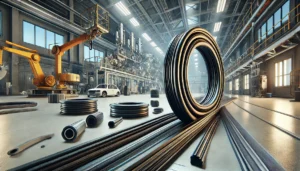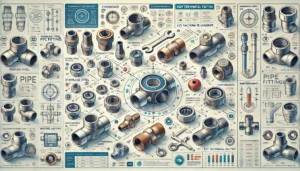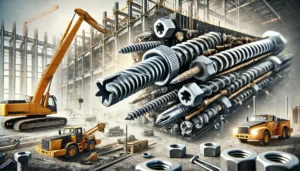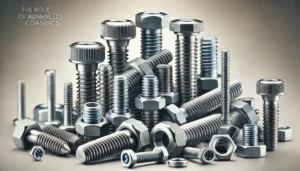Flanges serve as the primary connections in pipe works. They unite pipes, valves, pumps, and other appliances into one system. To avoid any leaks, the connections have to be secured which, in turn, increases the safety, integrity, and operational effectiveness of the system. Properly implemented installation processes will allow for reliable joints that are leak-free.
1. Preparation and Inspection
Make sure to check all the parts that make up flange joint as well as the gaskets:
- Flange: Check the flange faces for foreign matter, any materials that might lead to corrosion, and whether it has sustained damage. The sealing surfaces should also be thoroughly checked as any existing imperfections can affect the reliability of the seal.
- Gaskets: Gaskets capable of withstanding the temperature, pressure, and the nature of fluid should be selected. The selected gaskets should also be checked for any degradation.
- Bolts and Nuts: Make sure that bolts and nuts are in the appropriate size, material, and grade. For effective tightening, damage on the threads of the bolts and nuts should also be avoided.
2. Proper Alignment
In an effort to avoid leakage, proper alignment of the flange faces is also important:
- Flanges Alignment: Flanges should be positioned with their bolt holes matching each other completely. Any type of misalignment can create gaskets with uneven compression which, in turn, results in leaks.
- Utilize Guide Pins: In vertical arrangements, guide pins or centering bolts must be used to position the gasket in place during assembly and ensure that it does not move out of alignment.
3. Gasket Installation
The gasket offers significant aid in sealing the flange joint:
- Positioning: The gasket must be centered placed on the flange face and ensure that the bolt holes are matching.
- Handling: Do not use tools that are abrasive that can cut into and damage the gasket material. Never apply glue or sealants unless the gasket manufacturer directs to.
4. Bolt Installation
Gaskets are sealed efficiently by the right installation of bolts.
- Bolt Insertion: Position the bolts in the proper bolt holes making sure that they are placed over the gasket and flange holes freely.
- Lubrication: A proper P.T.F.E. a lubricating compound should be applied on the threads of the bolts and nuts for easier movement, ensuring proper torque settings.
5. Tightening Sequence
It is vital to tightening them correctly to ensure that an even seal is created.
- Initial Tightening: With hand, bolts should be slowly turned until the gasket is compressed evenly, and the flanges are vertical toward each other.
- Torque Application: Bolts should be turned using a proper adjusting torque wrench in a set cross pattern, first alternating direction. This allows for controlled adjustments in gradual increments, and ensures that the combustion and bearing flanges.
- Final Check: After tightening all bolts, re-tighten all bolts in a crosswise manner again to the strength needed finally.
6. Post-Installation Maintenance
After installation, conduct a thorough examination in considerable detail:
- Visual Inspection: Inspect if there are any signs of misaligned gaskets that may have uneven compression, or any visible defects.
- Leak Testing: Perform leak tests based on the industry standards to check if the flange connection is intact.
7. Maintaining and Monitoring Flange Connections
Periodic maintenance is important in order to provide reliable service for flange connections.
- Routine Inspection: Check periodically the flange connection for signs of deterioration in form of leakage or corrosion or other factors.
- Re-Tightening: Whenever it is found necessary, perform re-tightening of bolts but letting it follow the appropriate order and torque settings.
- Gasket Replacement: Gaskets must be replaced at designed intervals or if it exhibits signs of deterioration.
8. Safety Considerations During Installation
It is essential while installing that safety steps outlined below and other ones are observed.
- Personal Protective Equipment: A reasonable set of protective equipment must be worn, goggles must be worn in conjunction with gloves.
- Pressure Relief: The flange connection and systems must be depressurized prior to the opening to neutralize the risks of emission of hazardous material.
- Training: Ensure that people who perform flange installation works are adequately trained.
Achieving flanges that are leak-free is possible by adhering to correct installation procedures as well as constant maintenance of the piping system. Following these steps such as adequate preparatory work, alignment of the piping parts, gasket placement, bolts tightening, and routine checks will greatly increase the chances of maintaining the integrity of flanges in place which is to the safety and productivity of the piping systems.










